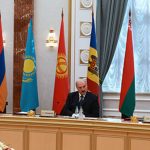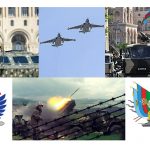- 7 February, 2020
- Useful resources

At a press conference convened on January 29, Chairman of the National Commission on Television and Radio (NCTR), Tigran Hakobyan, stated that the foreign TV channels existing in the public digital multiplex threaten national security of Armenia.
The NCTR Chairman supported his statement in the following way, “We have no influence on the foreign broadcaster” and if, for instance, Azerbaijan purchases the controlling interest of one of those channels and starts anti-Armenian propaganda, the NCTR will have no jurisdiction to take any steps against the given channel. Tigran Hakobyan highlighted that his statement was not addressed specifically against Russian TV channels, “In the public multiplex, there should be no place for any foreign broadcaster, even for that of the closest country.”
Tigran Hakobyan’s announcement received an impulsive response by Russia. The statement made by the Embassy of Russia to Armenia read like this, “the thesis that Russian TV channels pose “threats to the national security” raises some suspicion on the background of Armenian authorities’ announcements about allied and fraternal nature of our strategic relations.”
Experience of the Past
There are 5 foreign TV channels broadcast in Armenia’s public multiplex – “Мир”, “Россия”, “Первый канал” (Channel One Russia), “Культура” and CNN.
It is not the first time that the issue of their existence in the public multiplex has been brought forward. Tigran Hakobyan addressed it for many times in his interviews, and NA deputy Narine Tukhikyan expressed her concerns about this in 2019, by the way, pointing out specifically Russian TV channels.
One of the reasons for such a cautious approach towards the Russian channels is the so called experience of the past. Not once have these channels been used as a propaganda machine and disseminated obviously false or misleading information driven by various political motives. At different times, Armenian viewers experienced the impact of propaganda by the Russian channels. For example, the reportage on the “Electric Yerevan” protests made during the evening news broadcast on “Россия 1” (the video is not currently available on YouTube), where the movement was compared with those in Ukraine and Georgia and was presented as the starting point for Color Revolution, caused a stir. In the reportage, there were false announcements as if the demonstrators had been armed, used force against the police officers and the latter had had to disperse the demonstration using water cannons.
Proficiency of Russian TV channels to reveal external forces in domestic political movements became especially intensified after the “Velvet Revolution” of 2018. Such a thesis was made by one of the participants of the discussion organized on Channel One on April 23, the day of Serzh Sargsyan’s resignation. Another participant of the same discussion assured that in case of any conflict with Azerbaijan Russia will be the only state from who Armenia can ask for help. The third one simply assured that Armenia owes its existence to Russia.
In October 2019, Vladimir Soloviev hosted on “Россия 1” the Editor-in-chief of Russia Today, Margarita Simonyan. The latter was speaking for 27 minutes about one of their investigations within the scope of which it was “disclosed” that the Armenian youth is trained to conduct a revolution under the Western funding and by the revolutionary authorities of Armenia.
Within the context of Russian TV channels, it is worth referring to the aggressive reportage broadcast on “Россия 1”about the tragic car accident in Russia with Armenian driver Hrachya Harutyunyan that costed 18 human lives.
Statistics
Another reason why the Russian TV channels are first recalled when speaking about the foreign channels in the public digital multiplex is that, after all, they have a bigger audience in Armenia than the English-language CNN.
The survey conducted by the “Union of Informed Citizens” in June-July 2019 shows that a considerable part of the population, i.e. 32.8%, prefers to receive information in Russian, while only 4.2% of the survey respondents prefer English. Moreover, the table below shows that when it comes to receiving information from television, 34.7% of the survey respondents prefer Russian, while only 3% prefer English.
It is notable that “Россия 1” and Channel One that are broadcast in the public multiplex are among the TV channels with most viewers in Armenia – 6.1% and 5.1%, respectively, thus, falling behind only “Shant TV” («Շանթ»), “Armenia TV” («Արմենիա TV») and the Public TV (see Chart 1).
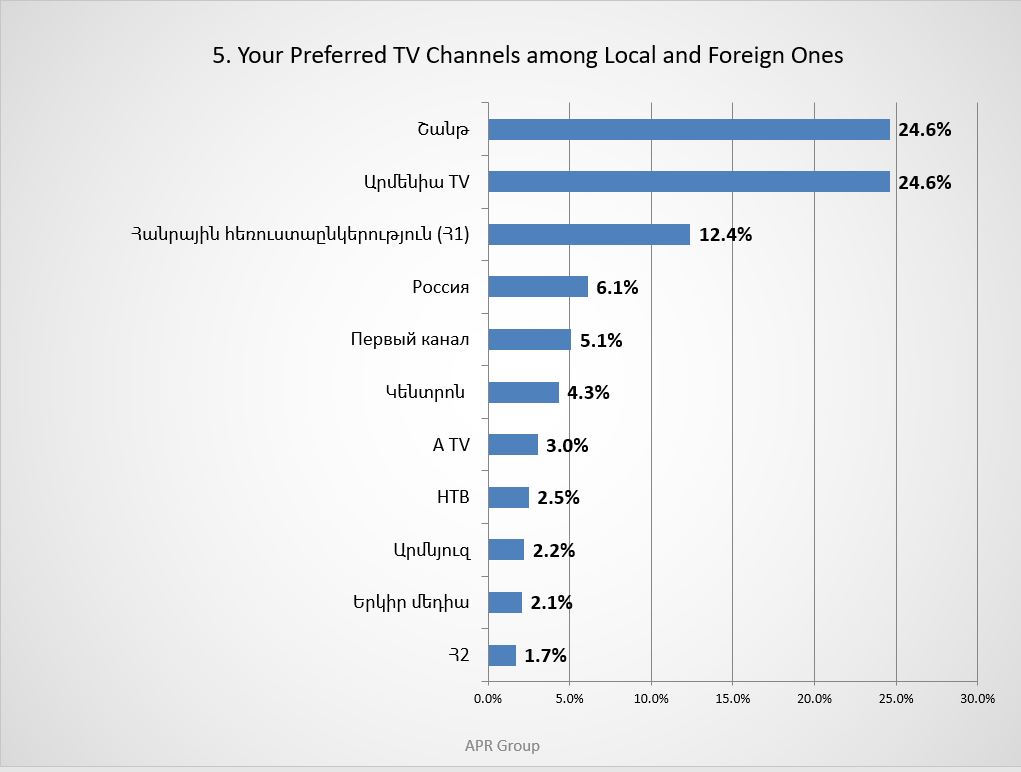
Nonetheless, public trust in those channels is not that high. To the question “What is the TV channel you trust most”, only 2.8% of the survey respondents mentioned Channel One, and 2.7% – “Россия 1”. However, it should be noted that these channels have a higher trust rating than “Yerkir Media” («Երկիր մեդիա»), “ATV”, “Armnews”(«Արմնյուզ») and “H2” («Հ2») (see Chart 2).
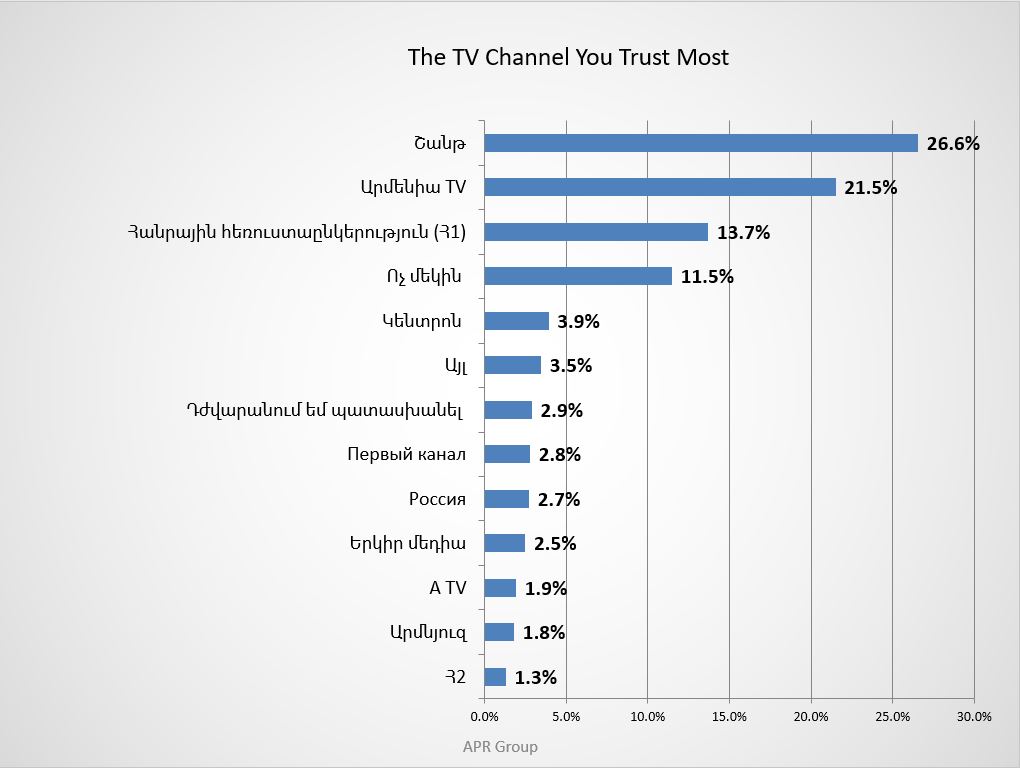
It is noteworthy that media-literacy level of the Russian-language audience is higher than that of those preferring Armenian-language TV channels and a little lower than that of those preferring English-language channels. Chart 3 presents media-literacy index numbers of viewers of the top 10 preferred TV channels and shows that those preferring “Россия 1” and Chanel One actually have a little higher level of media literacy.
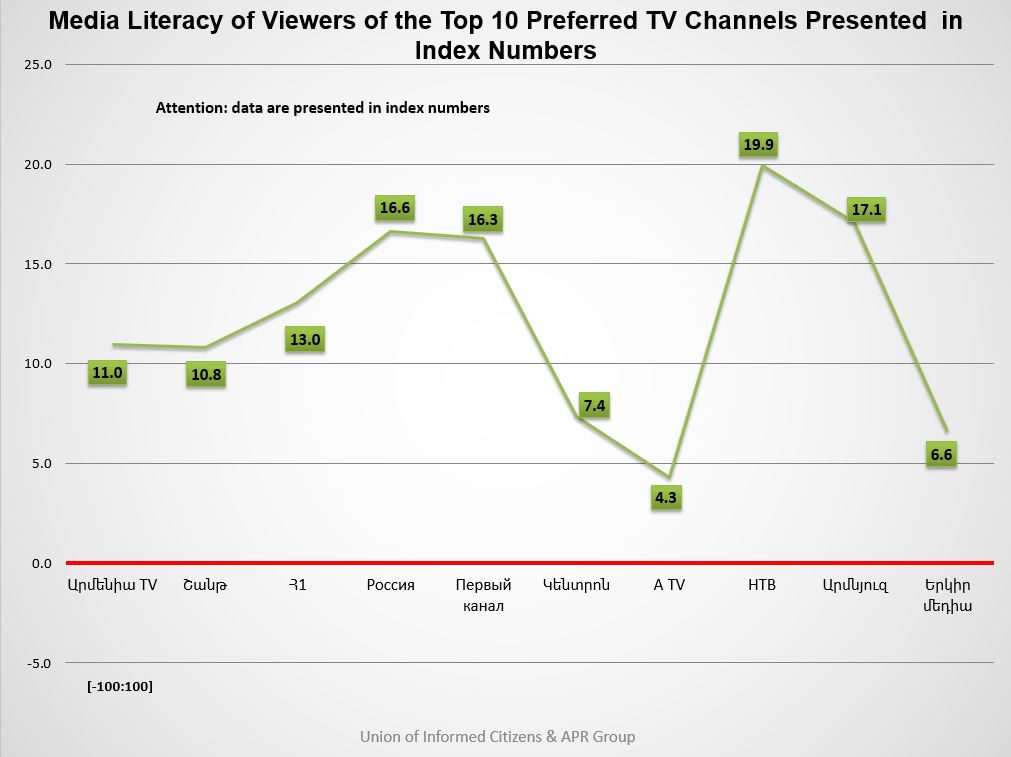
To sum it up, it can be fixed that at least two foreign TV channels broadcast in the public multiplex have quite a big audience among the Armenian viewers. Taking into account also the past experience when those channels used reportages for propaganda purposes, it can be stated that they can have influence on the public opinion at a propitious time.
Victorya Andreasyan,
Union of Informed Citizens


